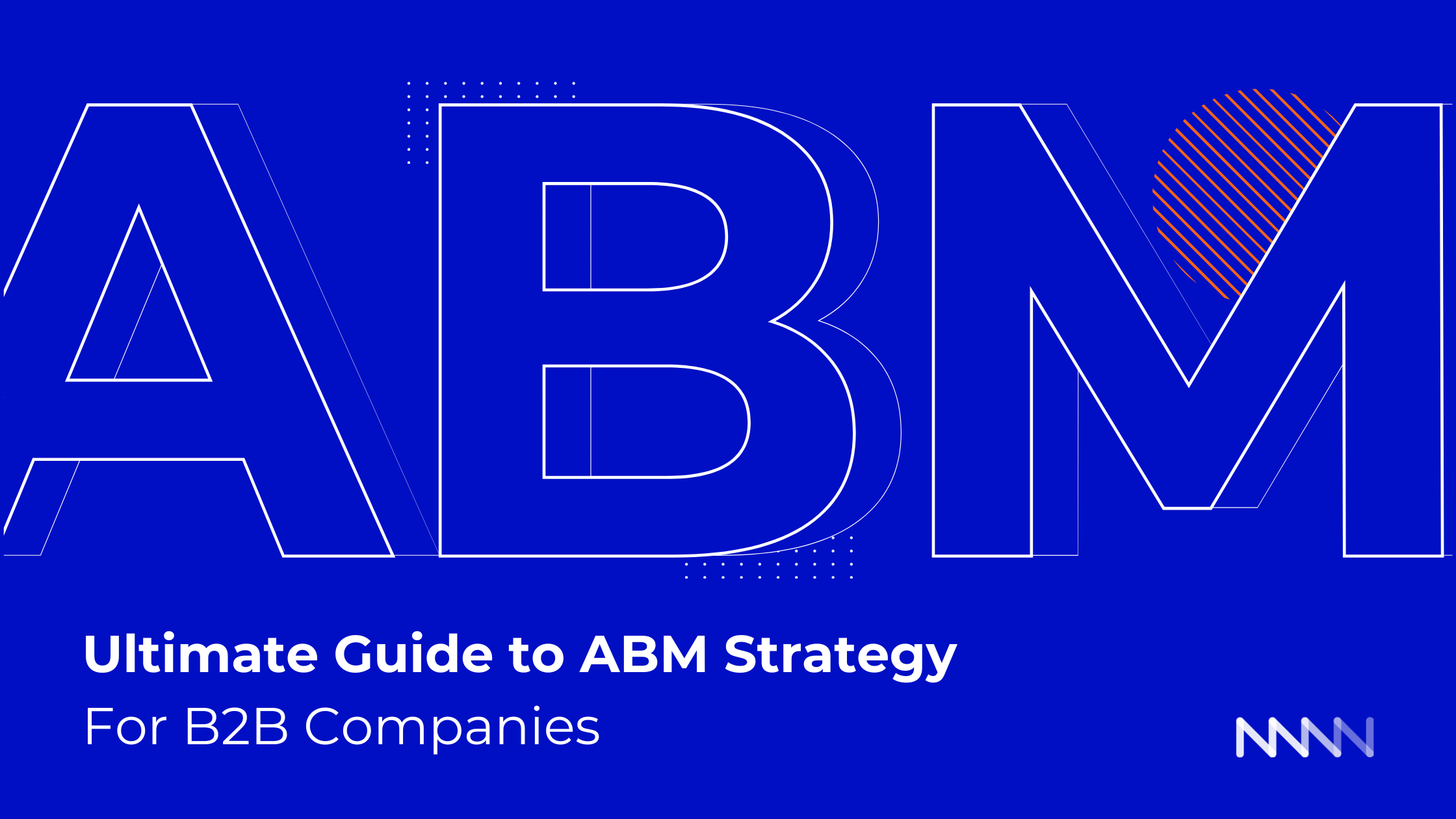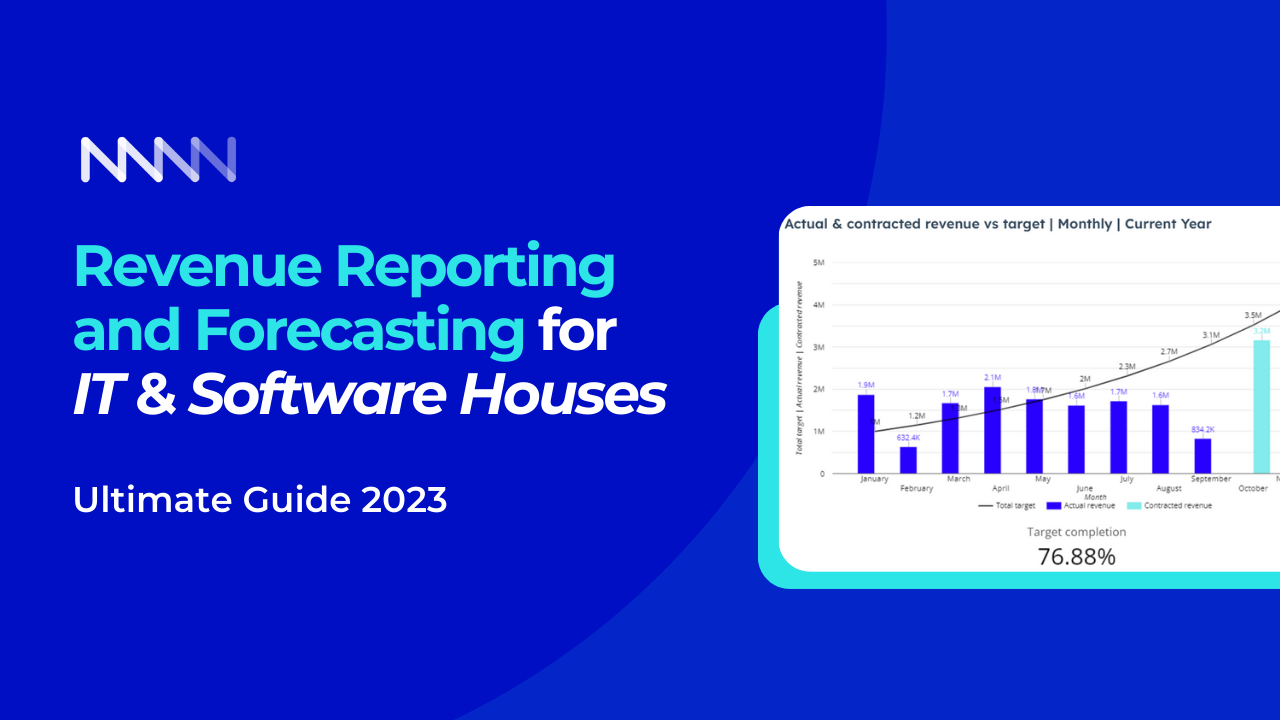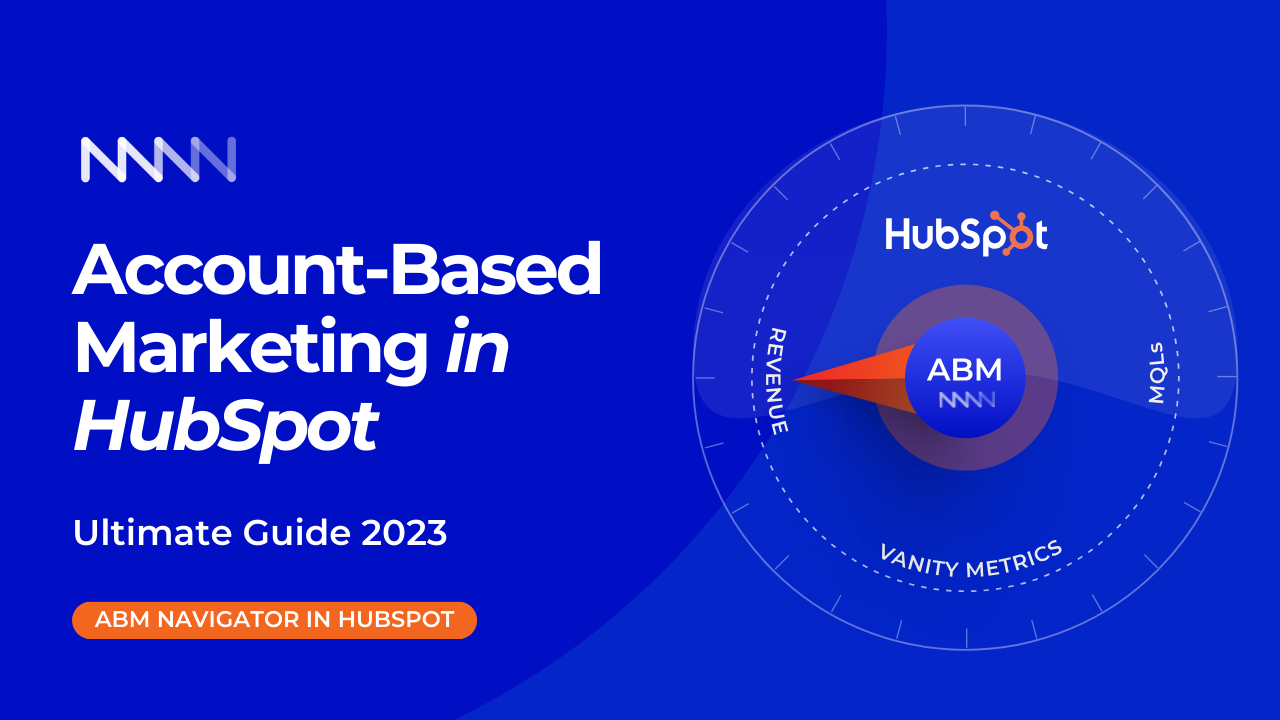RevOps Fundamentals for B2B Tech Companies
Over the years, most B2B Tech companies created a disjointed customer experience with disconnected teams, processes, and tools. As the prosperous economy favored growth at any cost and paid out fat checks, no one cared. Unless...
The crisis came, and Eldorado is over. Folks noticed that they finally have to start paying their "customer experience debt" when stalled revenue growth bit them in the asses.
And yes, you've guessed. Here is where RevOps comes in. From this article, you'll learn everything you need to know about RevOps, its framework & process with an implementation.
Shall we?
Table of Contents
What is RevOps?
Many folks make the mistake of thinking that RevOps is only about tactical alignment between marketing, sales, and customer success.
Whilst, RevOps is a strategic decision from a senior team to optimize their revenue growth. A definition from RevPartners folks we really like is: “RevOps is the science of sustainable revenue growth”
It seeks to accomplish the following:
-
Replicate and repeat revenue growth.
-
Uncover the process of how revenue teams can teach, measure, repeat, improve, explain, and apply growth strategies to the full revenue cycle.
-
Identify tools and behaviors that show how you’re collecting, synthesizing, and disseminating revenue data.
while RevOps is not:
-
Just about people, processes, tech, and data
-
An arm of sales or marketing, but a core function in its own right
How does RevOps influence B2B Companies?
RevOps, being an independent function, sees marketing, sales, and customer success as its internal customers. It seeks to replicate and repeat revenue growth by optimizing the customer experience (among other things).
To do this, RevOps:
- Centralizes all of the technology responsible for customer interactions.
- Unifies data and makes sure it flows to the right people & tech that needs it.
- Breaks silos and aligns the cx teams under a single revenue team sitting at one table together with customers.
As a result, RevOps provides visibility into the full customer journey. That allows for:
- Informing & revamping go-to-market strategies with actionable customer insights
- Painting a clear picture of best-fit customers with the biggest change of acquisition & expansion.
- Increasing customer retention & reducing churn rate.
Not surprisingly, companies that invest in RevOps grow 3x faster than those that don't. And achieve up to 28% more profitability with less overhead by strategically optimizing their revenue operations.
RevOps Framework
1. Business Model
These are the frames that set up how your business operates daily. Business Model influences yours:
- win rates
- level of risk
- go-to-market motions
- number of sales funnel stages
- sales cycle length and complexity
E.g if you are a SaaS business with low-value tickets charging customers on an MRR basis, your whole revenue strategy would be much different than if you were an enterprise service business selling one license at a time.
2. GTM Model
Here you're answering fundamental questions for your business:
- How do you do sales?
- How do you do marketing?
- How do you do customer success?
(GTM Model by Winning By Design)
You match go-to-market motions to your business based on two factors:
- the number of deals sold per year
- the annual contract value (ACV)
E.g if you are a SaaS business with ACV below 15k, 1-Stage sales, and Inbound marketing + community would be your GTMs.
Whilst, if you are an enterprise service business with ACV above 150k, named accounts sales and account-based marketing + accounts customer service would be your GTMs.
3. Growth Model
In order to accelerate growth, you need to understand at what stage your business is currently and what steps you need to take next.
(Growth Model by Winning by Design)
Product-Market Fit - the company is finding its fit with the market (e.g validating product/service pricing).
Go-to-Market Fit - the company built a go-to-market motion that brings revenue repeatably.
Scale-up Fit - the company knows which GTMs work and which do not, and now is focused on scaling motions that bring positive results.
Grown-up Fit - the company has multiple proven GTMs and shifts toward generating revenue from existing customers.
4. Data Model
This is the way you measure the effectiveness of the go-to-market motions across your funnel with standardized data for sales, marketing, and customer success.
(Data model by Winning by Design)
As a result, they have the same definitions of Lead, MQL, SQL, OPP, and Customer, as well as common KPIs they follow.
It gives you also visibility into crucial metrics such as:
- Conversion metrics (CR) between each lifecycle. E.g the % of MQLs converting to SQLs.
- Time metrics (AT1, AT2, ATx), eg. how many weeks it takes for MQL to become an SQL.
- Volume metrics (VM), eg. the number of leads/accounts/deals at each stage.
And when the right metrics are tracked, all functions and departments ultimately understand activities that contribute to driving revenue.
5. Math Model
It shows you what your biggest growth levers are. Based on the data you collect and estimated inputs, Math Model allows you to calculate positive or negative changes in generating revenue.
(Mathematical Model by Winning by Design)
Here you can answer questions like:
- How many more deals will I close if I increase the stage X->Y conversion rate by 10%?
- By how much will I shorten the sales cycle if I reduce my current number of stages (meetings in this case)?
- How much more revenue will I generate if I decrease the churn rate by 15% in this quarter?
6. Tech Stack
This is your infrastructure (CRM and tools) that supports GTMs and the teams responsible for their execution at every stage of the buyer journey.
Here you're asking questions:
- Are my tools connected?
- Do my people and processes have a stack they need to be effective?
- Does my infrastructure favor teams' efficiency or makes it difficult for teams to work?
7. RevOps
RevOps sits on top of these layers, providing:
- Processes
- Data management
- Strategic advisory
- Enablement for GTM teams
- Systems supporting GTMs, and the above models
RevOps in HubSpot
We wouldn’t be ourselves if we didn’t tell you how HubSpot supports RevOps execution. Kinda trifles, but:
Wrapping it up, HubSpot:
- Supports all crucial processes for sales, marketing, customer success, and operations regardless of the growth stage.
- Enable all go-to-market motions regardless of segment, market, ACV, and whether you are Startup, SMB, or even… Enterprise.
- Aligns your teams bringing together CRM, Marketing Automation Platform, Sales Engagement Platform, and Help Desk under one roof.
- Arms your people with powerful integrations and native API.
RevOps Maturity Plan & Implementation
Okay my friend, so far you know what RevOps is, how it influences your business and what's the framework. Finally, it's time to get your hands dirty and start implementation.
But, before you dive deeper into your data, processes, infrastructure, and tools...
You need a roadmap that shows what you should focus on first and how to deploy your resources in time.
Without it, you'll see so many spots needing improvements, that you'll don’t know where to start and how to prioritize tasks.
This is why in MAN Digital we've created RevOps Maturity Plan, which guides implementation step-by-step. So, let the magic happen.
The entire plan consists of 5 stages.
1. Visibility
In this stage, you have to make sure you capture data across the whole buyer journey. Start with mapping out lifecycle stages and lead statuses.
Life cycle stages help you categorize your contacts and companies based on where they are in your sales & marketing process and how they move forward through the funnel.
(HubSpot's lifecycle stages)
Lead statuses show you what actions your sales reps need to take next with the companies in the process.
(Companies' Lead statuses we use in MAN Digital)
When you put life cycle stages tracking over time and lead statuses together, you gain visibility into the full buyer journey.
It’s a crucial dataset that will be shared by all teams in stage 2.
2. Alignment
In this stage, you focus on two things
1. Breaking down data silos.
Your infrastructure has to become a single source of truth. It means that shareable data flows between teams and tools that need it.

(Single Source of Truth by MAN Digital)
2. Aligning marketing, sales, and customer success around common KPIs and definitions.
Remember the Data Model we presented earlier? Here is the time for its deployment, as you want to make sure that teams "speak the same language".
E.g the sales and marketing teams must have the exact same definition of MQLs to avoid situations in which marketing hit MQLs' volume target, but sales cannot close any of them.
What's more, you tie marketing to revenue (instead of metrics not impacting business) by tracking opportunities they generated and pipeline value.
Thanks to that marketing team get immediate feedback on the quality of leads they deliver. Additionally, they know exactly how they can support sales at every stage of buying journey (e.g mid-funnel with buyer enablement content).
Remember, this is only an example of cooperation between marketing and sales. To unlock full revenue growth potential, you must align all the teams (sales, marketing, customer success).
3. Insights
Teams need to understand what activities contribute to revenue growth and how they affect each other.
In this stage, you introduce analytics to extract actionable insights from your go-to-market motions and inform overall revenue strategy.
E.g you split funnel dashboards by go-to-market motion (outbound, demand gen, events, etc.) to see how they perform and to match the lead source with the win rates and CAC over a specific period of time.
Look at our example of the Outbound GTM Dashboard in HubSpot:
You see which GTM brings higher ROI in a given quarter (let’s scale it and invest more in processes), and which should be shut down or modified (cost mitigation & improvements).
4. Velocity
Having covered previous objectives (full buyer journey visibility, teams’ alignment, and actionable insights), you can start implementing and testing new GTMs.
In this phase, you start with quick experiments to find bottlenecks in the processes and reduce friction in the very beginning.
As you improve the efficiency of your processes along the way and prove GTM delivers repeatable results, you can start scaling and operationalizing.
5. Innovation
Now, it’s finally time for infrastructure development and robust integrations with 3rd party apps and tools.
In this last stage, you push all financial information into HubSpot and develop resource planning and customer success management.
As well as, embed marketing & sales intelligence with advanced workflows, analytics, and triggers.
As you can see...
Revamping revenue strategy and infrastructure supporting it is a complex and often overwhelming task.
This is why building a clear process roadmap is crucial for companies to make transformation happen. And for RevOps professionalists, to avoid burnout and sleepless nights.
And speaking of RevOps professionals...
Anatomy of Perfect RevOps Professional
The RevOps leader has to build & revamp the team's processes from the perspective of the whole funnel, not only specific department activities. To do that effectively, RevOps needs to be an independent function sitting next to sales, marketing, and customer success leader, not behind them.
And since the RevOps professional has an equal place at the table with the other cx teams leaders, to make an impact he must:
- Understand the team’s processes at the deep level,
- Be a senior person with past experience in marketing, sales, and customer success,
- Understand how they interconnect and how stuff should be handed off between the teams,
- Mix that knowledge with data management, tech management, and systems design.
As you can see, it's not a place for a junior person.
How does RevOps support GTMs?
Your marketing, sales, and customer teams own what gets done, while RevOps owns how it gets done.
How does it work in practice?
Check out the example of a sales motion run by SDRr based on Gartner Infographics.
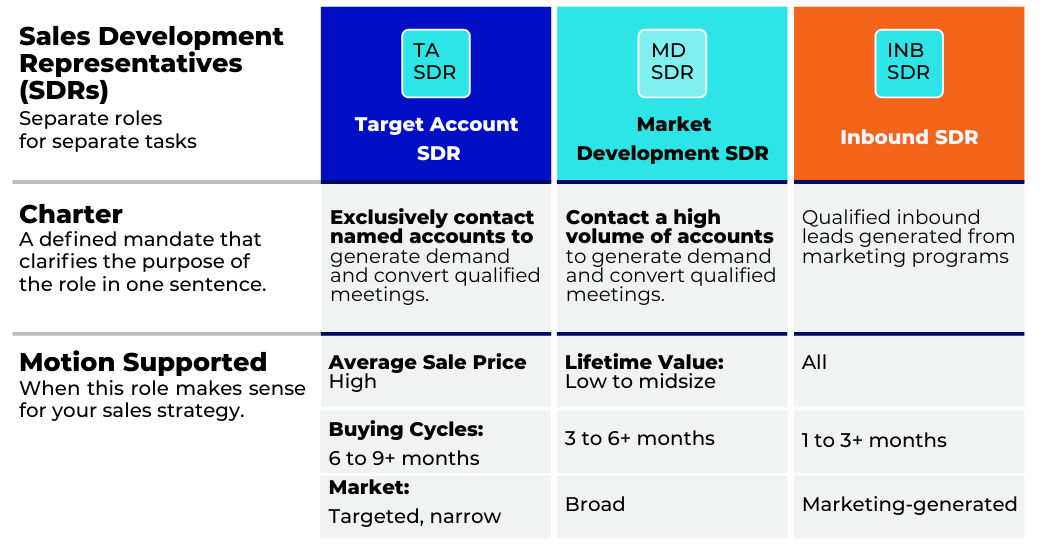
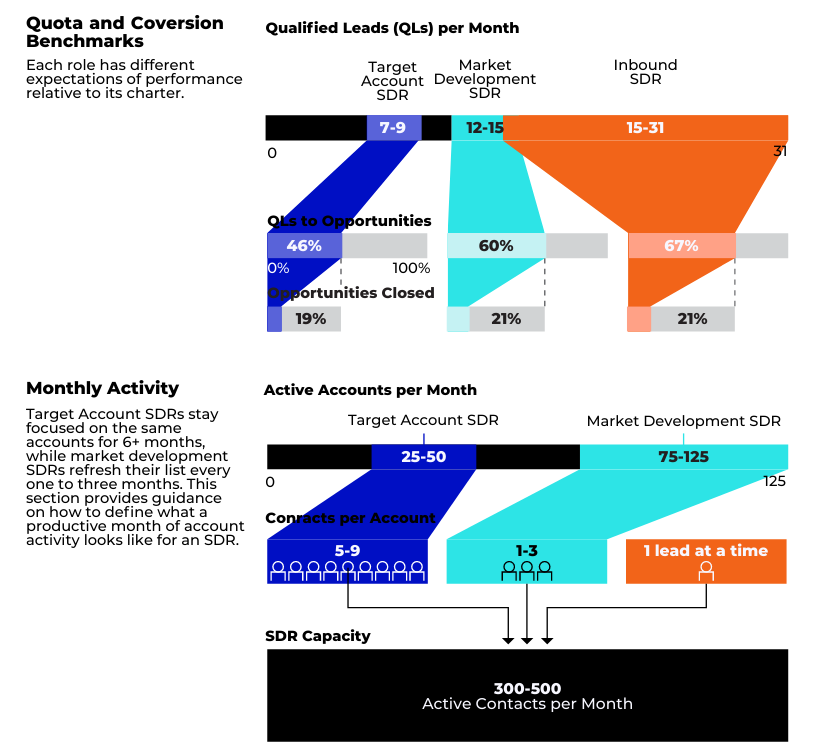
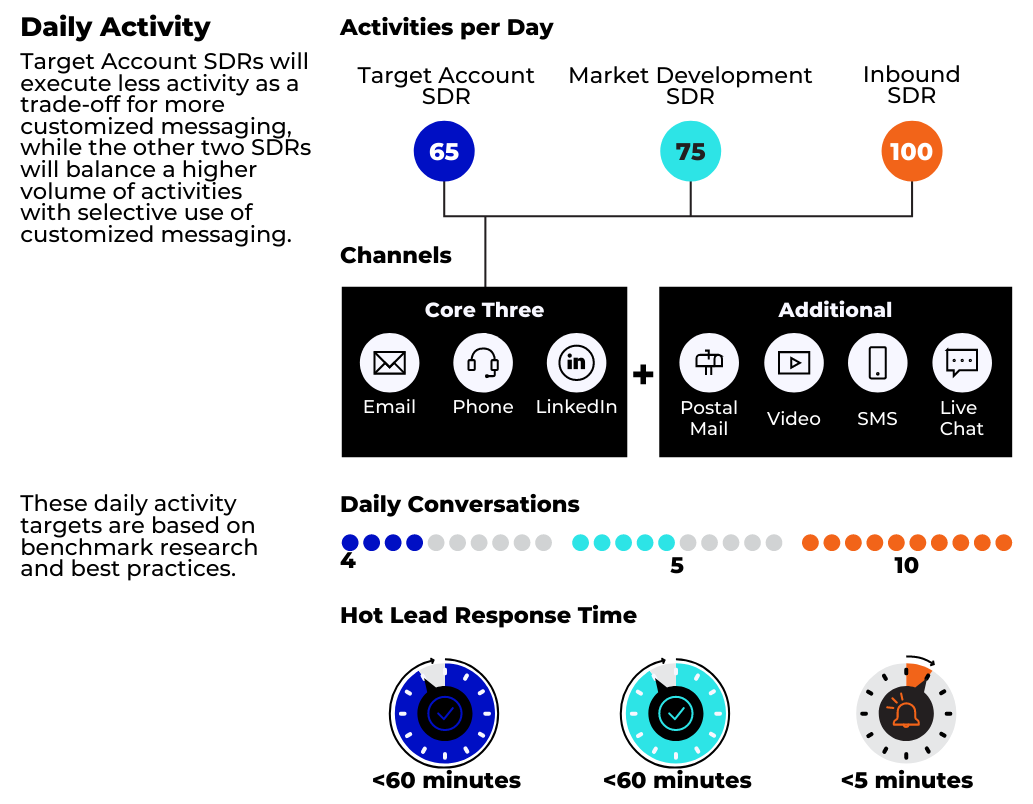
GTM management shows why RevOps is so important for your company. It tells your teams how specific go-to-market motions should be executed step-by-step, giving them clear guidelines and processes.
As a result, the efficiency, and effectiveness of their daily activities skyrocket.
Summary
Keep that in mind...
Everything RevOps does impacts all facets of the customer acquisition and success process. This is why RevOps is not an easy fix and you shouldn’t treat it to cure symptoms.
It’s quite opposite.
Everything that RevOps touches will be more difficult in the short term. Thus, you need senior revenue architects who get sales, marketing, and customer success. As well as, system management, data, and technology to carry out the transformation.
Doing RevOps right will reward you with effortless execution for your teams and repeatable revenue growth in return.
But…
Doing RevOps wrong... oh man, it’s far more likely that it will make things worse than in the beginning.
Therefore, if you have any questions about RevOps, don't hesitate to contact us. We're here to help you.

